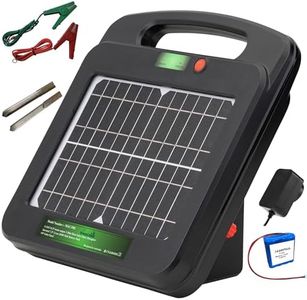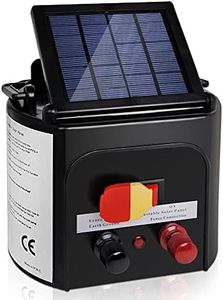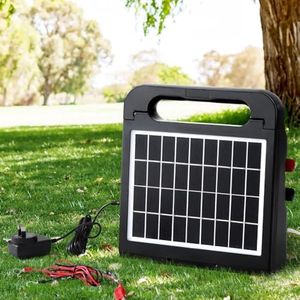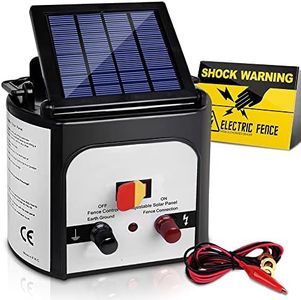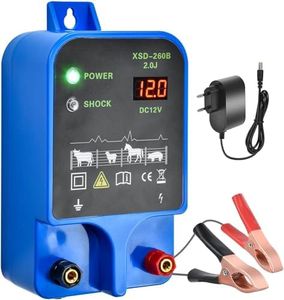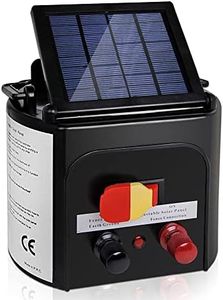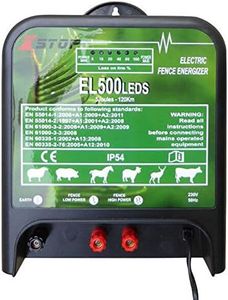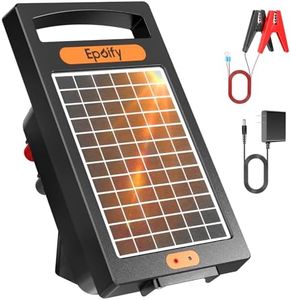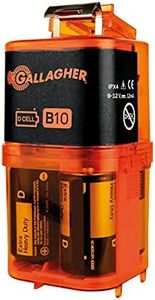We Use CookiesWe use cookies to enhance the security, performance,
functionality and for analytical and promotional activities. By continuing to browse this site you
are agreeing to our privacy policy
10 Best Electric Fence Chargers
From leading brands and best sellers available on the web.By clicking on a link to a third party's website, log data is shared with that third party.
Buying Guide for the Best Electric Fence Chargers
When choosing an electric fence charger, it's important to understand that this device is the heart of your electric fencing system. Its main task is to provide a safe, short, and powerful pulse of electricity through your fence wire, acting as an effective barrier to contain livestock or keep pests and predators out. Picking the right charger can mean the difference between an effective fence and one that fails its job. To make the best choice, you'll need to assess your particular needs and environment, focusing on key specifications to ensure reliability, safety, and performance.Power SourceThe power source tells you how the charger gets its energy—commonly from an electrical outlet (AC), a battery (DC), or solar panels. This matters because your fence location may not have easy access to standard electricity. AC chargers are great for nearby plug-in convenience and steady power, while battery and solar options are better for remote or off-grid setups. When choosing, think about how close your fence is to power sources, whether you want low-maintenance solar energy, or if you need portable power from a battery.
Joule OutputJoule output measures the energy delivered in each pulse and is a core indicator of how strong your electric fence will be. Low joule output is suitable for short fences with few weeds or obstacles and for containing gentle animals. Medium output suits longer fences and moderately stubborn animals. High output is needed if you have long fences, rough vegetation contact, or tough animals that challenge boundaries. Match the joule rating to the type of animals and fence length you have—larger, harder-to-control animals and long, weedy fences need more power.
Fence Range (Miles/Kilometers)The fence range tells you the maximum length of wire the charger can power under ideal conditions. However, real-world factors like vegetation, type of wire, and weather can reduce this. For a basic home garden, a small range is enough, but for long runs or multi-pasture systems, you need a charger with a much greater range rating. Think about your total fence length and round up to allow for future expansion and power loss from plants or wet conditions.
Type of Animals or PestsDifferent animals require different levels of deterrence. Small animals or pets can be contained with lower-powered chargers, while cattle, sheep, horses, or wild predators might need stronger pulses. Make a list of what you want to keep in or out—soft-skinned animals need gentler pulses, while thick-skinned or highly motivated animals need more power. This will guide both your joule and range requirements.
Weather Resistance & Build QualityBuild quality and weather resistance ensure your charger works reliably outdoors, exposed to rain, heat, cold, and sun. Look for durable, sealed units if your charger will be out in the open, or lighter weather protection if it will stay in a sheltered shed. If your climate is especially harsh, invest in a well-designed, robust unit that handles water and extreme temperatures.
Ease of Installation and MaintenanceHow easy a charger is to set up and maintain can make a big difference in your overall experience. Some units feature simple clip or hook connections, clear voltage indicators, and low-maintenance designs. If you’re new to electric fencing or want minimal hassle, look for models that are plug-and-play or have clear instructions and user-friendly interfaces. Think about how often you'll need to check or adjust the charger and how easy that process will be with different models.
